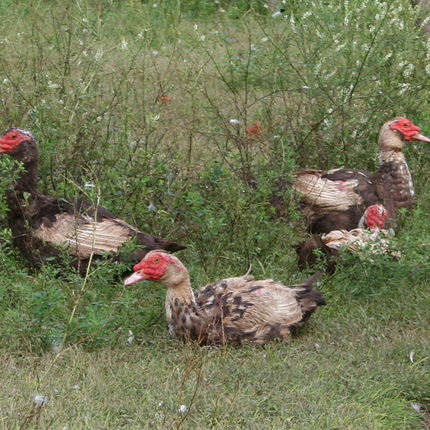The deadline to sign up for Whole Farm Revenue Protection is March 15. Contact your crop insurance agent today.
The Center for Rural Affairs held several workshops this winter to answer farmers’ questions about Whole Farm Revenue Protection. In case you missed the workshops, here are some of the highlights we learned.
Why should I purchase a Whole Farm Revenue Protection policy for my farm?
A lot of farmers and ranchers produce crops and livestock that are difficult to insure under standard crop insurance policies. Specialty grains - organic or conventional; livestock; and fruits and vegetables are all difficult to insure for many farmers. This means when they suffer a loss with one of those commodities, farmers are unable to make an insurance claim on them. Whole Farm Revenue Protection fills that gap and allows farmers and ranchers to insure almost any commodity on their farm.
How does Whole Farm Revenue Protection work?
Instead of insuring specific crops, like most crop insurance policies, Whole Farm Revenue Protection insures the revenue of your farm. If your overall revenue for the year drops below your coverage level, then you can file a claim.
What paperwork do I need for a Whole Farm Revenue Protection policy?
Your crop insurance agent only needs to see five years (or three years for beginning farmers) of Schedule F tax returns to verify your historic income. The Schedule F is the only portion of your tax return they see.
Does Whole Farm Revenue Protection impact my other crop insurance policies?
No. Whole Farm Revenue Protection can be used at the same time as your other crop insurance policies. It does not impact them. In fact, it could complement them.
For example, during our workshops, one crop insurance agent told us about a farmer. When combining Whole Farm Revenue Protection with other crop insurance policies, he was able to reduce the total bill he was paying while also increasing his level of insurance coverage.
There are two things to keep in mind regarding how Whole Farm Revenue Protection works when used with other crop insurance policies.
Whole Farm Revenue Protection policies are based on a farmer or rancher’s tax returns. Other crop insurance policies allow for filing a claim in the fall, after the harvest is over. However, since Whole Farm Revenue Protection depends on revenue records (i.e. Schedule F on tax returns), a claim cannot be filed until the new calendar year when a farmer or rancher’s tax returns are completed. This is why some farmers or ranchers who purchase Whole Farm Revenue Protection choose to keep their other crop insurance policies, possibly at a lower level. Filing a claim sooner can help with cash flow. Then, coverage from Whole Farm Revenue Protection helps fill in gaps in their other coverage.
Remember that Whole Farm Revenue Protection covers revenue. If a farmer or rancher files a claim under a different crop insurance policy, such as hail or multi-peril, and receives an indemnity, that indemnity counts toward their total revenue for the year. If their total revenue, including the indemnity payment, is still below their coverage level, they would still be able to file a claim under their Whole Farm Revenue Protection policy.
How much will my premium cost under Whole Farm Revenue Protection?
There’s no simple answer to this. Your Whole Farm Revenue Protection premium will be calculated based on your historic revenue as well as the prices you can expect to get on your commodities in your area. Every policy is different, so you’ll have to speak with your crop insurance agent to determine what the price will be for your farm.
Is Whole Farm Revenue Protection subsidized like other crop insurance policies?
Yes. In fact, the more commodities you insure under Whole Farm Revenue Protection, the higher the level of subsidy you qualify for. For example, if you only want to insure one commodity under Whole Farm Revenue Protection at a 75 percent loss level, you will only qualify for a 55 percent premium subsidy (in other words, the government will only support 55 percent of that cost to you). If you want to insure three commodities at a 75 percent loss level, you can qualify for an 80 percent premium subsidy. In other words, Whole Farm Revenue Protection rewards on-farm diversity.
I’m working to grow my farm, and my revenue is increasing next year. Will Whole Farm Revenue Protection still work for me?
Yes! Whole Farm Revenue Protection actually has a way of insuring the projected growth of your farm. Contact your crop insurance agent for details.
Is there anything that Whole Farm Revenue Protection won’t cover?
Yes. Whole Farm Revenue Protection only covers livestock or nursery revenue up to $1 million. It also does not cover revenue from grassland rented out for grazing (although we suspect if a landowner became a part owner of the cattle, then Whole Farm Revenue Protection could cover the cattle - if this possibility interests you, please get in touch with us). There are a few other limitations. Contact your crop insurance agent for details.
My crop insurance agent isn’t familiar with Whole Farm Revenue Protection. What should I do?
Feel free to contact us at the Center for Rural Affairs and we’ll see if there’s anything we can do to help. Our contact info is below.
We also produced several webinars to help answer your questions about Whole Farm Revenue Protection. Three of them were for crop insurance agents and address insuring specialty crops, commodity grains and livestock. You can find them here.
What if I have more questions about how Whole Farm Revenue Protection?
Feel free to contact us at the Center for Rural Affairs at [email protected] or 402.687.2100.





